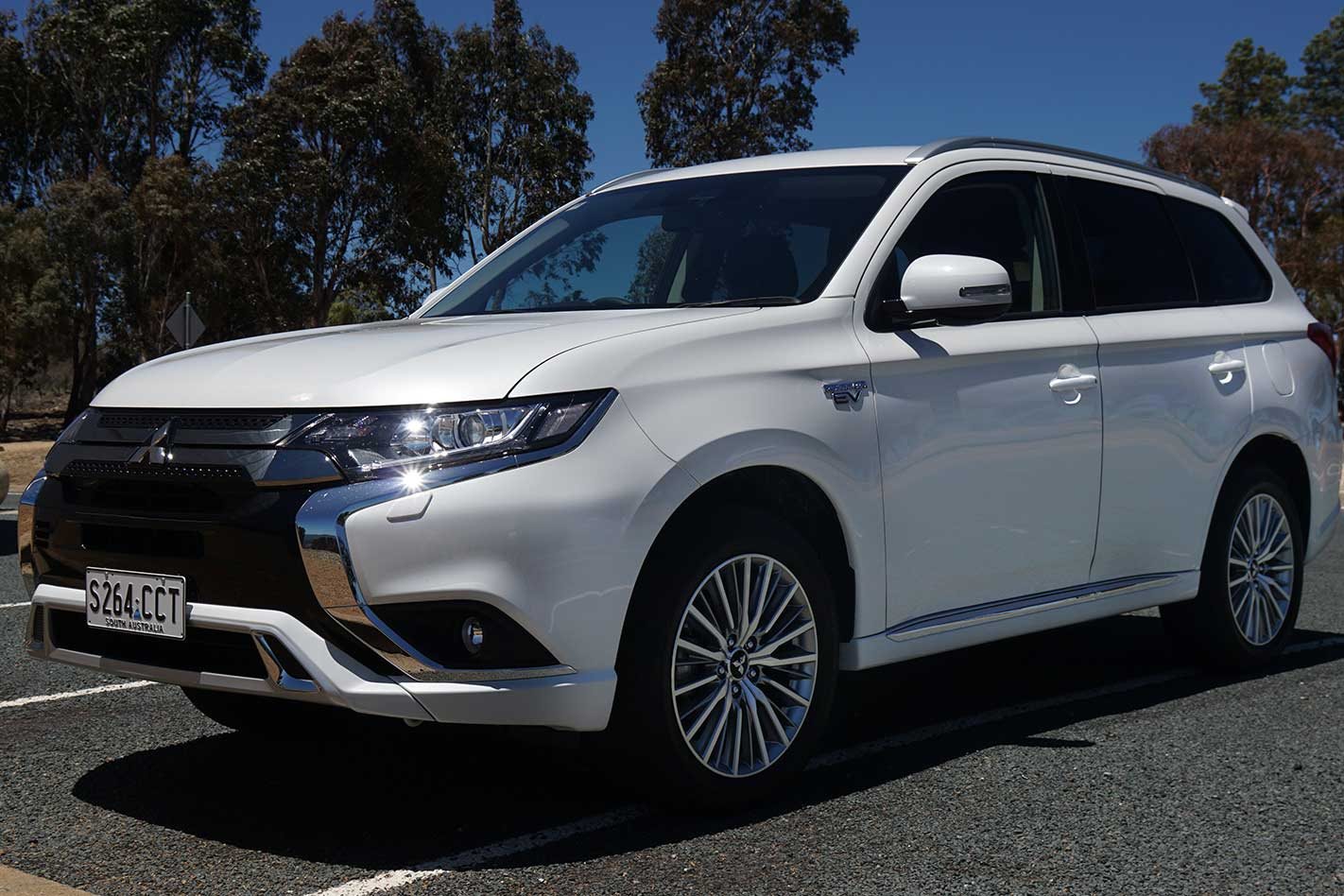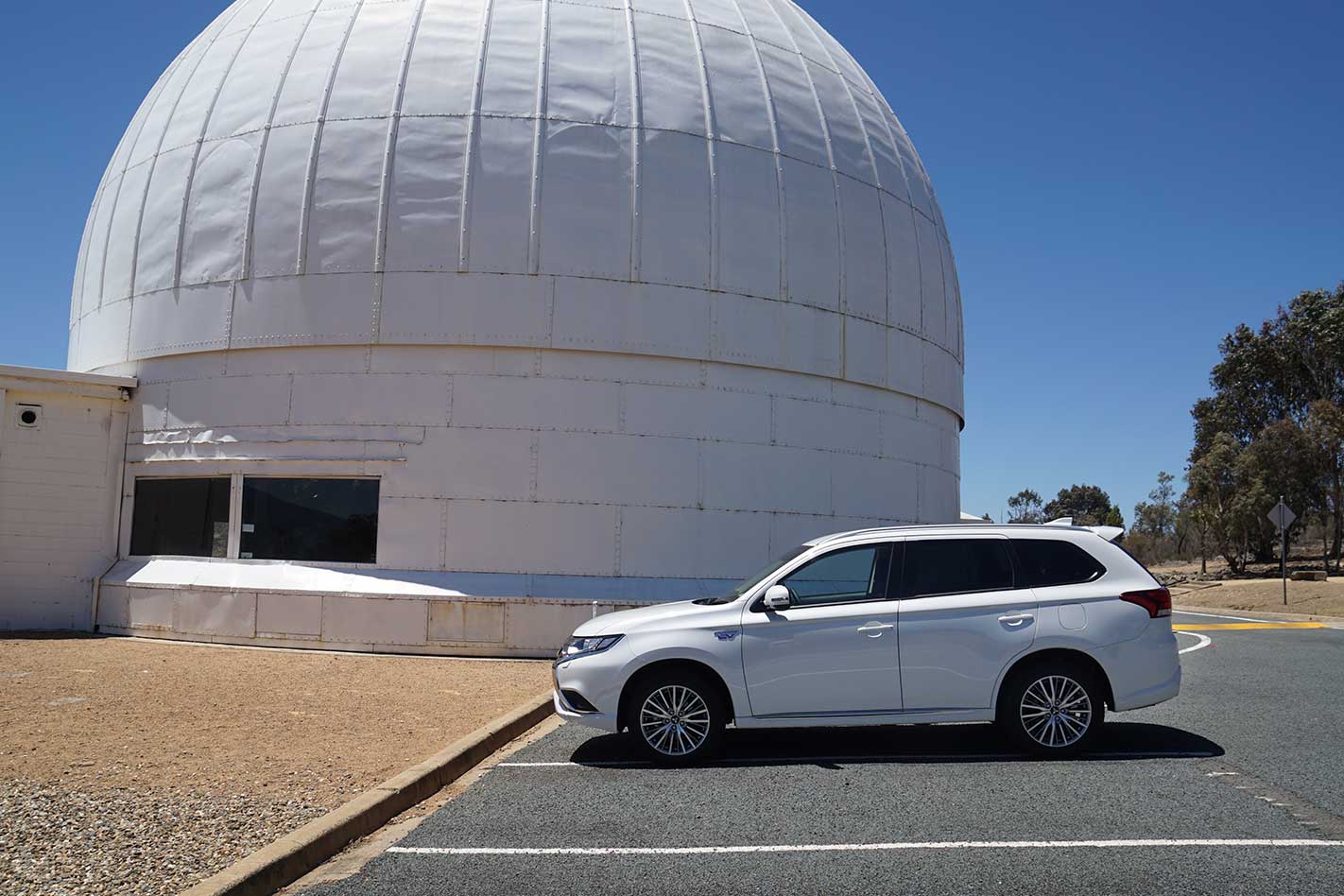
Despite approaching seven years on the market, the Mitsubishi Outlander PHEV has been given a thorough mechanical update with the introduction of the 2.4-litre naturally-aspirated four-cylinder engine from the standard Mitsubishi Outlander range, a higher capacity battery pack, more powerful rear motors, more safety and interior features, and revised pricing.
Headlining the changes for the new Outlander PHEV range is a 94kW/211Nm 2.4-litre engine, which replaces the 87kW/186Nm 2.0-litre unit in Australia. Eagle-eyed readers will notice that those numbers are lower than the non-electrified 2.4-litre unit in the standard Outlander, but that’s because the PHEV’s engine is tuned to run on the leaner-burning Atkinson cycle , which favours efficiency over outright power.
And given the engine is mostly tasked with charging the batteries and only augments the electric motors at speeds above 65km/h, that power shortfall isn’t such a big deal.
All said, the bigger engine does raise the official ADR combined fuel consumption figures from 1.7L/100km to 1.9L/100km, though those figures are accounting for a fully charged battery.
As for the battery, its capacity has been increased 13.8kWh, up from 12kWh. In addition to that, the rear electric motor has been boosted from 60kW to 70kW. Charging time has also gone up from six and a half hours to seven hours for a full charge from a Type 1 charger. Use of a Type 2 and DC fast charger would return an estimated charging time of three hours and 25 minutes respectively.
Despite the increased energy capacity, the new 2.4-litre engine equipped Outlander PHEV has the same 54km of all-electric range claim as the now discontinued 2-litre powered model.
Mitsubishi Australia has chosen to maintain the same three variant structure as before, with the Outlander PHEV available in the ES, ES ADAS, and Exceed.
New to the ES range is the addition of Forward Collision Mitigation collision warning and autonomous emergency braking (AEB), a new 8-inch infotainment display with Apple CarPlay and Android Auto, front seat heaters and power-adjustable lumbar support for the driver’s seat, electro-chromatic rear mirror, and two USB power connections for the second row of seats.
The ES ADAS carries on the improvements from the ES and adds more safety, with the addition of lane departure warning, adaptive cruise control, and automatic high beam separating it from the base ES.

As for the range-topping Exceed, it features a new TomTom navigation system, speed limit information display, an 8-speaker sound system, and a EVPS auxiliary power supply that enables the PHEV’s battery to feed power to an equipped household – handy in case of a blackout.
Besides the new additions, the Exceed carries over equipment like Unintended Acceleration Mitigation, a 360-degree camera, blind sport warning, lane change assist, rear cross traffic alert, power tailgate, electric sunroof, LED headlights and front fog lights, heated and electrically folding door mirrors, power-adjustable driver’s seat, and leather upholstery, on top of the features fitted to the ES ADAS model.
Visually the Outlander PHEV’s exterior remains unchanged, carrying on the same trim updates that were introduced in September, with the subtle updates to the interior with piano black dash and door trim, a slightly improved instrument display, and improved seat cushioning. The only exterior addition comes in the form of the Eclipse Cross’ Red Diamond premium metallic paint option.
With the new engine and features, prices for the Outlander PHEV have been raised with the ES now costing $1000 more at $46,990, the ES + ADAS getting the smallest of increases with $500 bumping it up to $47,990, and the Exceed copping a $2000 raise to $55,990.
All Outlander PHEV variants come with a $299 capped price servicing, 15,000km service intervals, a 5 year/100,000km warranty on the vehicle and 8 year/160,000km warranty on the traction battery, and 3 year club membership with roadside assistance.



